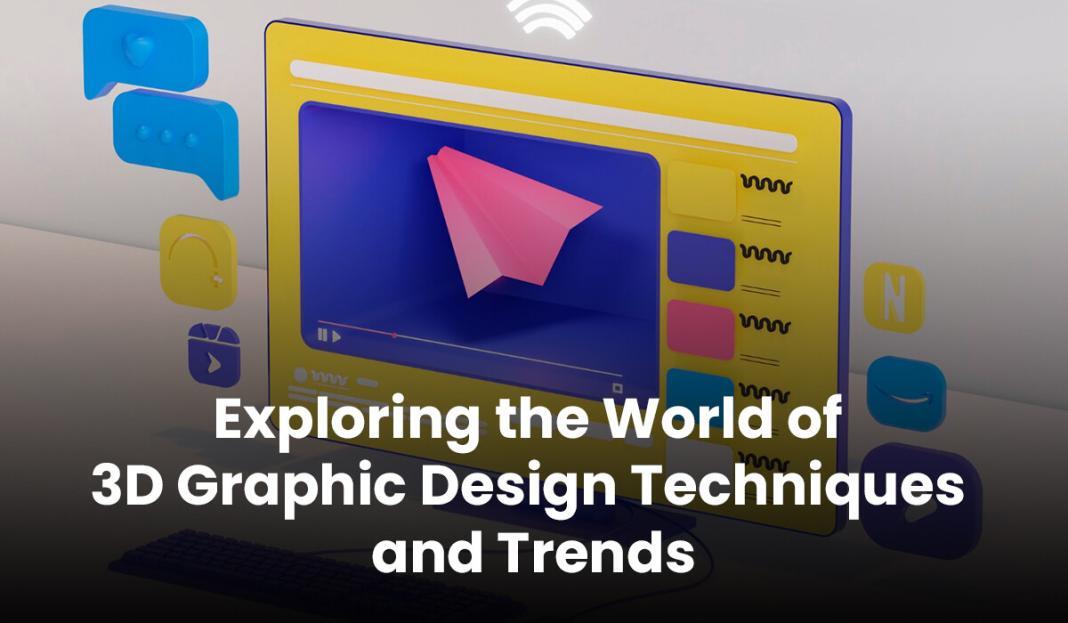In the ever-evolving realm of design, 3D graphic design stands out as a dynamic and immersive frontier, pushing the boundaries of creativity and visual storytelling. As technology continues to advance, the world of 3D graphic design offers a canvas for designers to bring their visions to life. In this blog post, we’ll embark on a journey into the fascinating world of 3D graphic design, exploring cutting-edge techniques and the latest trends shaping this innovative landscape.
1. Evolution of 3D Graphic Design: From Pixels to Polygons
The evolution of 3D graphic design is a testament to the relentless pursuit of realism and visual impact. Traditionally, graphic design relied on 2D elements, but the advent of 3D technology has added an extra dimension to the creative process. Moving beyond pixels, 3D design involves the manipulation of polygons and vertices to create lifelike objects and environments.
The transition from 2D to 3D has revolutionized industries ranging from gaming and entertainment to architecture and marketing. With powerful software tools and hardware advancements, designers can now breathe life into their concepts, immersing audiences in visually stunning and interactive experiences.
2. Mastering the Tools: Software and Techniques
To navigate the vast landscape of 3D graphic design, designers need to be proficient in a variety of tools and techniques. Industry-standard software such as Autodesk Maya, Blender, and Cinema 4D empowers designers to model, animate, and render their creations with precision.
a. Modeling: The foundation of any 3D design is the modeling phase. Designers use specialized tools to shape objects, characters, or environments in three-dimensional space. Techniques include polygonal modeling, NURBS (Non-Uniform Rational B-Splines), and sculpting for organic forms.
b. Texturing: Adding textures to 3D models brings them to life. Designers use UV mapping to apply textures to specific areas of a model, creating realistic surfaces. Advanced techniques such as procedural texturing and PBR (Physically Based Rendering) enhance the visual fidelity of 3D designs.
c. Animation: Animating 3D models introduces movement and dynamism. Rigging allows designers to create skeletons for characters, enabling realistic movements. Keyframing, dynamics, and particle systems contribute to the complexity and fluidity of animations.
d. Rendering: The rendering process transforms 3D models into 2D images or animations. Ray tracing, global illumination, and ambient occlusion are rendering techniques that simulate real-world lighting and shadows, elevating the visual quality of the final output.
3. Immersive Experiences: Virtual Reality (VR) and Augmented Reality (AR)
One of the most exciting trends in 3D graphic design is the integration of virtual and augmented reality. These technologies offer immersive experiences that go beyond traditional screens. Virtual Reality allows users to step into a virtual world, interacting with 3D designs in real time. AR overlays digital elements onto the real world, blending the physical and virtual realms seamlessly.
Designers are leveraging VR and AR to create innovative solutions in fields such as gaming, education, and marketing. From virtual product simulations to augmented reality art installations, these technologies are reshaping how we perceive and interact with 3D design.
4. Fluid Realism: The Rise of Fluid Simulation and Real-time Rendering
Achieving realistic fluid dynamics and simulations has been a longstanding challenge in 3D design. However, recent advancements in fluid simulation algorithms and real-time rendering engines have elevated the quality and realism of liquid and fluid simulations. Designers can now create breathtaking scenes featuring realistic water, fire, smoke, and other dynamic elements.
Real-time rendering engines like Unreal Engine and Unity have democratized the creation of high-quality visuals, allowing designers to see the final result instantly. This has significant implications for industries like gaming, where real-time rendering enhances the player experience and enables dynamic storytelling.
5. Minimalism Meets 3D: An Artistic Fusion
In a departure from the hyper-realistic trend, there is a growing movement that fuses 3D design with minimalism. Designers are exploring the intersection of simplicity and depth, creating visually striking compositions with clean lines and subtle details. This trend not only challenges the boundaries of traditional 3D design but also aligns with the modern aesthetic preferences of audiences.
By combining minimalism with 3D techniques, designers can convey powerful messages and evoke emotions with elegance and sophistication. This approach is evident in branding, product design, and architectural visualization, where the marriage of simplicity and three-dimensionality creates a harmonious visual experience.
6. The Marriage of 3D and Sustainability: Eco-Conscious Design
As sustainability takes center stage globally, 3D graphic design is also aligning with eco-conscious principles. Designers are incorporating sustainable themes, materials, and narratives into their 3D creations. From eco-friendly product renderings to virtual environments that champion environmental causes, 3D design is becoming a powerful tool for raising awareness and promoting sustainable practices.
By visually illustrating the beauty of nature and the consequences of environmental degradation, designers can inspire positive change. The fusion of 3D design with sustainability not only reflects societal values but also positions brands and creators as advocates for a greener and more sustainable future.
Conclusion
The world of 3D graphic design is a vast and ever-expanding frontier where creativity knows no bounds. As technology continues to advance, designers must stay at the forefront of trends and techniques to craft immersive and impactful visual experiences, suggests, graphic designing companies.
From the evolution of 3D technology to mastering the tools, embracing immersive technologies, and exploring artistic fusions, the journey into 3D graphic design is an exhilarating exploration of creativity and innovation. Whether you’re a seasoned designer or an aspiring artist, the world of 3D awaits, ready to transform your visions into captivating realities. As we navigate the 3D horizon, the only limit is the boundless expanse of our imagination.
You may also like,
- Why 3D printing technology is the future of manufacturing?
- Patent Landscape Analysis Report on 3D Printed Circuits







